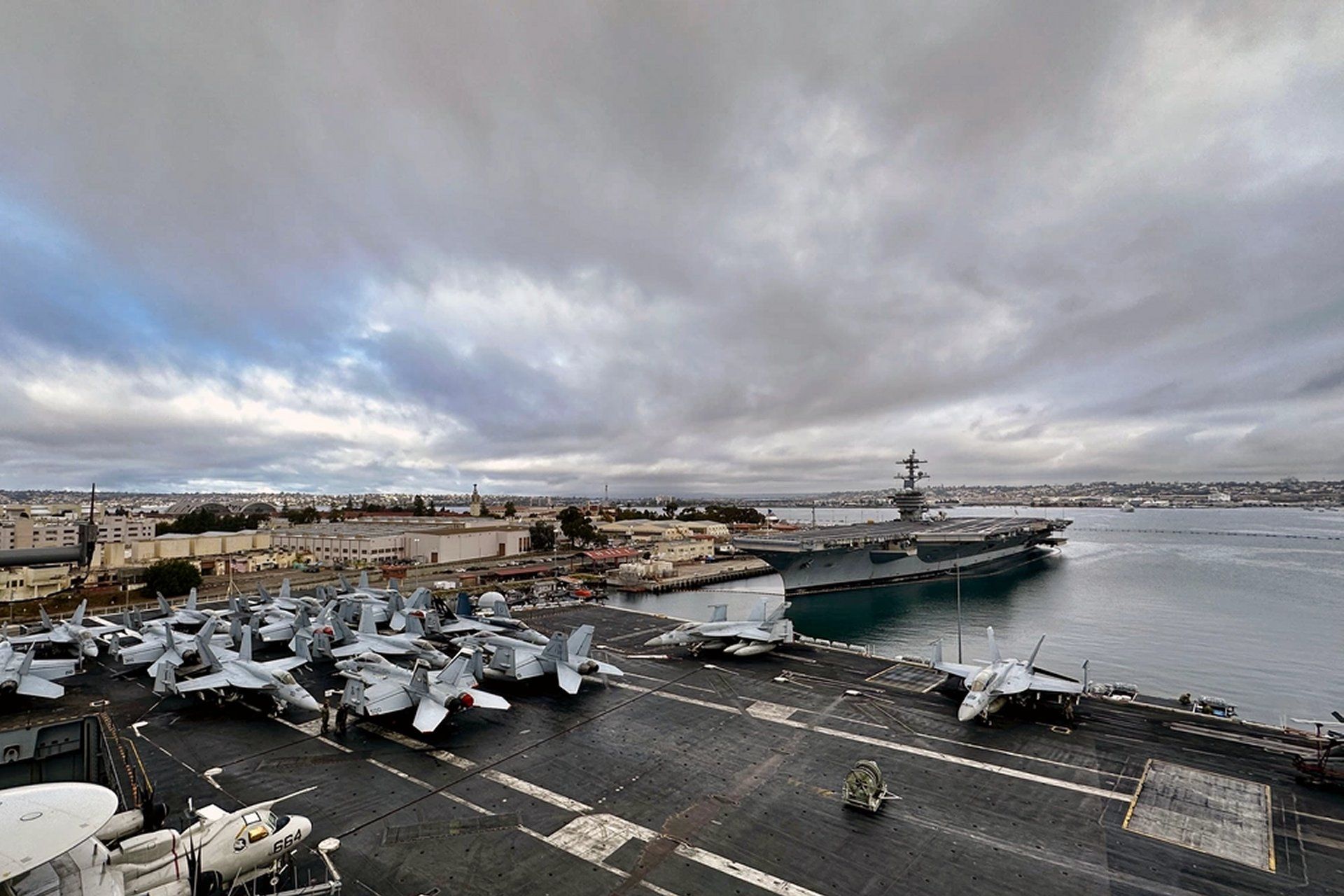Breaking News
USS Theodore Roosevelt and USS Abraham Lincoln deployed to Middle East as US signals readiness to defend Israel.
According to information published by the US DoD on August 27, 2024, the United States has reinforced its military presence in the Middle East in anticipation of potential threats against Israel or U.S. forces from Iran or its allied groups. In a show of force, two U.S. carrier strike groups have been positioned in the region, led by the USS Theodore Roosevelt and the USS Abraham Lincoln.
Follow Army Recognition on Google News at this link

The Nimitz-class aircraft carriers USS Theodore Roosevelt (CVN 71) and USS Abraham Lincoln (CVN 72) are docked at the port in San Diego. (Picture source: Dvids)
The U.S. has decided to extend the deployment of two carrier strike groups in the Middle East amid rising tensions following a recent exchange of fire between Israel and Hezbollah, a Lebanese militant group. The decision was announced by Pentagon officials, following a series of escalations that have raised concerns of a broader regional conflict.
The USS Theodore Roosevelt has been stationed in the Middle East since June, having been redirected from a planned deployment in the Indo-Pacific to replace the USS Dwight D. Eisenhower. The USS Abraham Lincoln joined the Roosevelt last week, equipped with advanced fighter jets such as the F-35C and F/A-18 Block III.
Analysis
The presence of two carrier strike groups allows for substantial redundancy and operational flexibility. Each carrier strike group operates independently with its own air wing, surface combatants, and support vessels, providing a self-sufficient unit capable of conducting sustained operations.
With two carrier strike groups, the U.S. can significantly enhance its strike capabilities. Each carrier typically hosts an air wing comprising approximately 60-70 aircraft, including F/A-18E/F Super Hornets for air superiority and strike missions, EA-18G Growlers for electronic warfare, and E-2D Hawkeyes for airborne early warning and control.
The combined air power from two carriers allows for more extensive and simultaneous strike operations, capable of targeting multiple threats or executing complex missions that require sustained air dominance. This capability is crucial in deterring adversaries like Iran and its proxies, who might consider testing U.S. resolve or exploiting perceived gaps in coverage.
The deployment also strengthens joint operations capabilities, enabling the integration of air, surface, and sub-surface assets. Surface combatants accompanying the carriers, such as guided-missile destroyers and cruisers, are equipped with advanced weapons systems, including the Aegis Combat System for missile defense and various anti-submarine warfare (ASW) capabilities. This layered defense enhances both offensive and defensive operations.


























